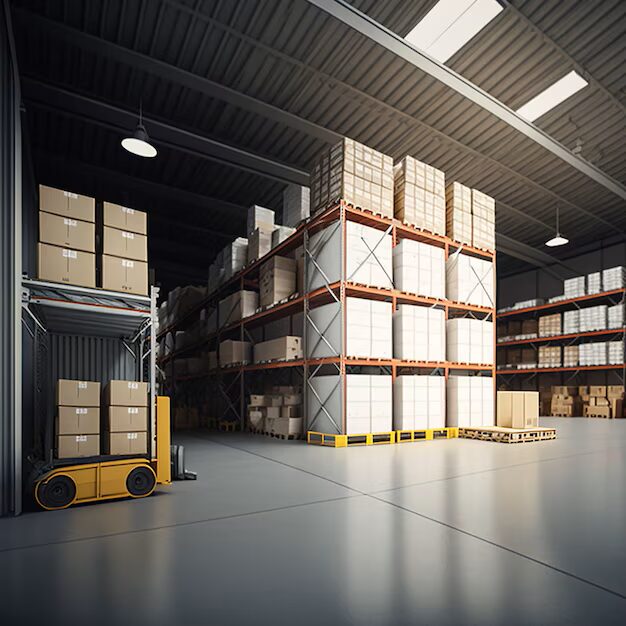In the world of logistics and supply chain management, choosing the right type of warehouse can significantly impact your operations and costs. Whether you’re managing import/export activities or domestic storage, understanding the difference between bonded and non-bonded warehouses is crucial. Here’s a deep dive into the features, benefits, and drawbacks of each option to help you make an informed decision.
What is a Bonded Warehouse?
A bonded warehouse is a storage facility authorized by customs authorities, allowing businesses to store imported goods without immediately paying duties or taxes. These warehouses are particularly useful for businesses engaged in international trade and those requiring duty-free storage.
Key Features of Bonded Warehouses for Importers:
- Customs Control: Operates under customs supervision.
- Duty-Free Storage: Duties and taxes are deferred until goods are removed for sale or use.
- International Trade Support: Ideal for import/export businesses.
- Extended Storage Periods: Goods can be stored for months or even years, depending on local regulations.
- Enhanced Security: Often features heightened security measures to protect goods.
What is a Non-Bonded Warehouse?
A non-bonded warehouse, also known as a general warehouse, is a facility where goods can be stored without the oversight of customs authorities. It’s typically used for domestic storage and does not offer duty deferral benefits.
Non-Bonded Warehouse Services:
- Domestic Storage: Tailored for local distribution.
- Greater Flexibility: Easier to access and move goods.
- Lower Regulatory Burden: No customs paperwork required for stored goods.
- Cost-Effective for Local Needs: Suitable for businesses focused on domestic markets.
Comparing Bonded and Non-Bonded Logistics
| Feature |
Bonded Warehouse |
Non-Bonded Warehouse |
| Duty Payment |
Deferred until goods leave the warehouse |
Paid upon entry into the country |
| Customs Clearance |
Required for entry and exit of goods |
Not required for stored goods |
| Storage Purpose |
Ideal for international trade |
Best for domestic storage solutions |
| Security Measures |
High-level security |
Standard security measures |
| Regulatory Oversight |
Operates under customs authority |
No customs involvement |
| Cost Considerations |
May involve higher operational costs |
Typically more affordable |
| Flexibility |
Limited due to customs rules |
Highly flexible for inventory management |
Pros and Cons of Bonded and Non-Bonded Warehouses
Bonded Warehouse Benefits:
- Duty-free storage options reduce upfront costs.
- Provides time for businesses to manage cash flow.
- Simplifies customs clearance for bulk imports.
- Essential for companies engaged in bonded storage for import/export activities.
Drawbacks of Bonded Warehousing:
- Complex customs procedures.
- Higher operational costs due to security and compliance requirements.
- Limited flexibility in accessing goods.
Advantages of Non-Bonded Warehouses:
- Ideal for local storage solutions with minimal regulations.
- Offers greater flexibility in handling and accessing goods.
- Cost-effective for businesses not dealing with international trade.
Disadvantages of Non-Bonded Warehousing:
- Requires immediate payment of duties for imported goods.
- Does not support international trade operations as effectively.
When to Use Bonded vs. Non-Bonded Warehouses
- Bonded Warehouses: Best for businesses involved in international trade, requiring extended storage times or duty deferral. For example, companies importing goods in bulk to be distributed in different countries can significantly benefit from customs bonded warehouse features.
- Non-Bonded Warehouses: Ideal for domestic businesses needing fast and flexible storage solutions without customs involvement. These are perfect for retail businesses or local manufacturers focusing on quick inventory turnover.
Choosing the Right Type of Warehouse
Selecting between bonded and non-bonded options depends on your business model, storage needs, and operational priorities. Here are a few guiding questions:
- Are you importing/exporting goods internationally? (Bonded warehouse benefits are crucial.)
- Do you need duty-free storage for an extended period? (Duty-free storage options in bonded warehouses are ideal.)
- Is your business primarily domestic? (Non-bonded warehousing flexibility will be more advantageous.)
- How important is immediate access to your goods? (Advantages of non-bonded warehouses include easier access.)
Conclusion
Understanding how bonded warehouses differ from non-bonded warehouses helps businesses align their storage strategies with their operational goals. Whether you prioritize bonded warehousing for international trade or need local storage solutions in non-bonded warehouses, each option offers distinct advantages. By carefully evaluating your needs and weighing the pros and cons of bonded and non-bonded warehouses, you can optimize your supply chain and ensure cost-effective operations.
What You Need to Ask a Bonded vs. Non-Bonded Warehouse Provider

